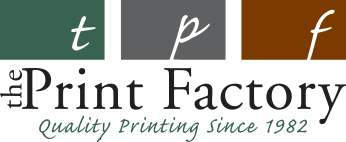
If you’re familiar with the world of printing, chances are, you’ve struggled with color matching. Creating something on a digital screen often renders differently when the project goes to print. Why is this and how do you fix it? As one of the longest-standing NH printing companies, the experts at The Print Factory are here to help!
Here, we’re talking about screen color and print color, and what you need to know to make your projects shine.
Paper
It should go without saying that the paper you choose makes a world of difference in the resulting project. Are you using a high gloss or matte finish? The two types produce two different color effects. Other factors to consider lie within the brand you are using. Paper brands have different chemical compositions, additives, textures, and (as we mentioned) finishes. Each one of these elements will change how ink responds and appears.
Remember, your paper choice matters more than most people tend to believe.
Color Embedding
Before you even think about your paper selection, however, you need to begin with your file. How are you embedding the color profile into your work? A few common options include:
- CMYK
- RGB
- Pantone
To keep things simple, here is a brief overview of the three categories.
The RGB color model is a digital representation of many colors that are obtained from light. Red, green and blue, when combined produce white (hence the light aspect). CMYK, on the other hand, uses subtractive color theory to create darker hues. Be sure to check out our previous article that goes more in-depth between the differences between RGB and CMYK and explains how and when to convert your digital files between the two.

Workarounds to avoid digital and printing discrepancies.
Now that you have a basic understanding of why your digital file may look different when printing, let’s talk about how to avoid the situation altogether! Below are a few tips to keep in mind:
- Understand your paper choice before beginning to create a colorful project the way your paper requires. If you’re printing on ivory paper, this is another huge factor that will affect the end result.
- Talk to your printing shop to gain an understanding of the equipment that will be used. Such knowledge will work to your advantage in the long run and help all sides achieve beautiful results.
- Always run a test print. Regardless of your level of expertise and experience, running a test print provides precise and accurate answers as to how your project will turn out.
Do yourself a favor and save the frustrations of printing stress by contacting The Print Factory today! As a premiere NH printing company, you can have peace of mind knowing that screen versus print color differences is no match for this team!
